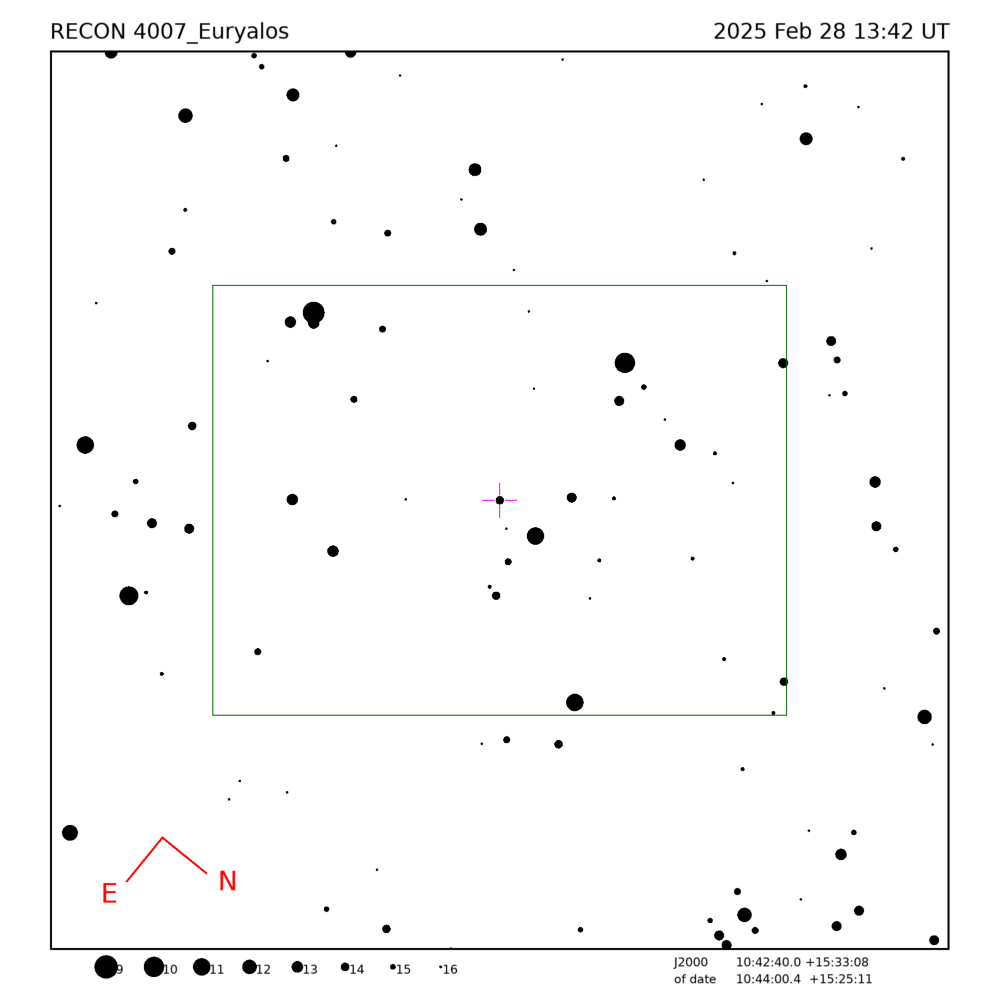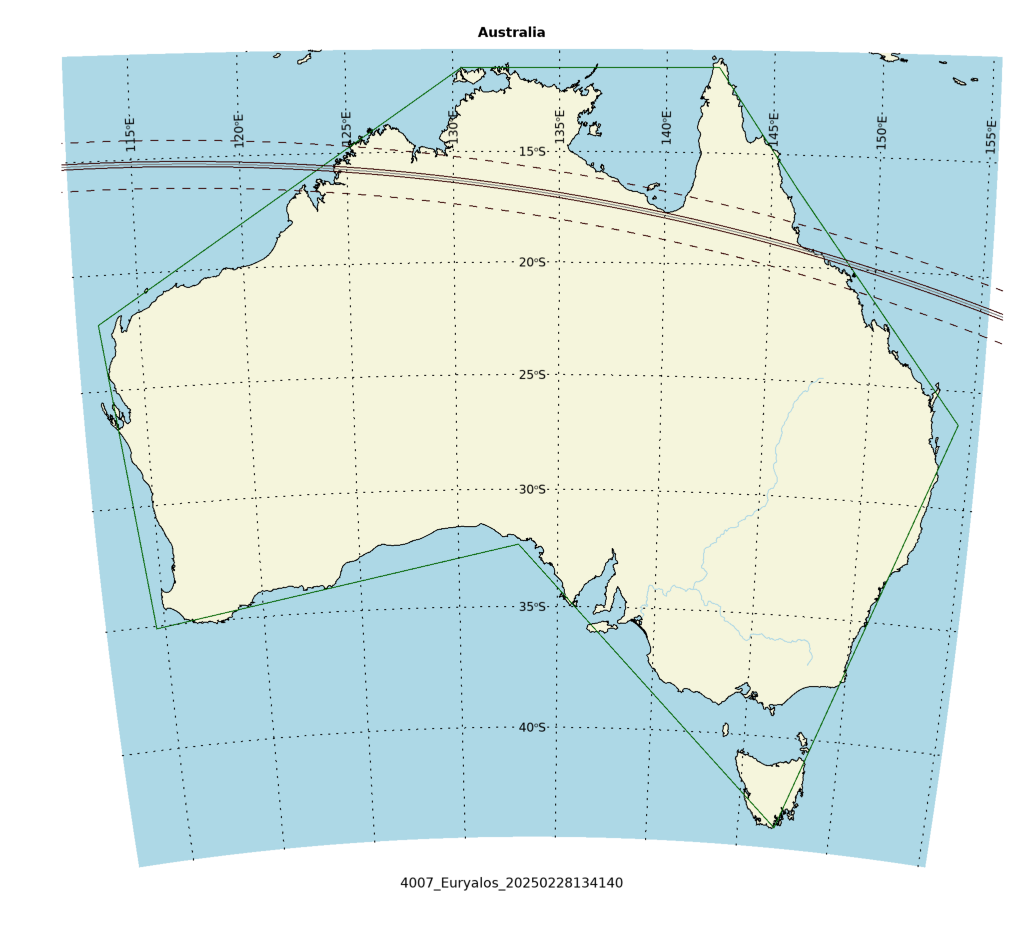
Occultation event with (4007) Euryalos, event index number 738
Regions able to see the event: Australia
Geocentric closest approach at 2025/02/28 13:41:40 UTC
J2000 position of star is 10:42:40.0 +15:33:08
Equinox of date position of star is 10:44:00.4 +15:25:11
Star is 167 degrees from the moon. Moon is 0% illuminated.
Stellar brightness G=14.4, apparent brightess of occulting body is G=14.9
Use an exposure time of 0.50 seconds with the standard RECON-QHY system.
Expected flux drop is 39% with SNR of 10.0 per integration
Apparent velocity is 17.0 km/sec on the sky relative to the star, or, 20.7 arcsec/hr.
The recommended exposure time corresponds to 8.5 km per image.
The 1-sigma error in the time of the event is 2.7 seconds.
The 1-sigma cross-track error in the shadow position is 28.3 km.
The sky-plane scale is 2969.9 km/arcsec.
Diameter estimates:
51.0 km assuming a 5% albedo, aximum of 3.0 sec for a central chord
20.8 km assuming a 30% albedo, maximum of 1.2 sec for a central chord
Cross-track diameter of 51.0 km used for deployment plan.
Star training set for 4007_Euryalos, (2025/02/28 13:42UT) Object RA Dec mag sep mel Regulus 10:09:42.6 +11:50:36 1.3 9.07 162 68Del Leo 11:15:26.6 +20:23:08 2.6 8.97 165 52 Leo 10:47:45.1 +14:03:40 5.5 1.63 169 PPM 127610 10:41:45.6 +14:49:53 8.1 0.80 167 PPM 127628 10:43:18.4 +15:44:46 9.5 0.37 167 PPM 127645 10:44:38.1 +15:18:25 10.7 0.19 167 4007_Euryalos 10:44:00.4 +15:25:11 14.9 168 Positions are for equinox of date


Star training set for 4007_Euryalos, (2025/02/28 13:42UT) Object RA Dec mag sep mel Regulus 10:08:21.9 +11:58:02 1.3 9.07 162 68Del Leo 11:14:06.7 +20:31:22 2.6 8.97 165 52 Leo 10:46:25.1 +14:11:39 5.5 1.63 169 PPM 127610 10:40:25.2 +14:57:48 8.1 0.80 167 PPM 127628 10:41:57.9 +15:52:42 9.5 0.37 167 PPM 127645 10:43:17.7 +15:26:21 10.7 0.19 167 4007_Euryalos 10:42:40.0 +15:33:08 14.9 167 Positions are for J2000